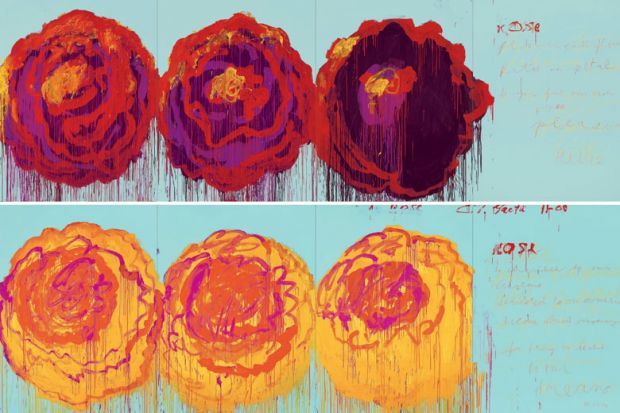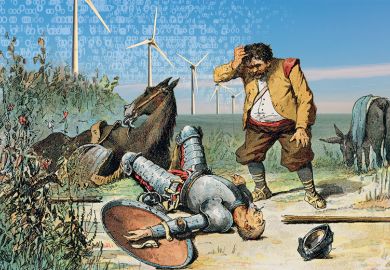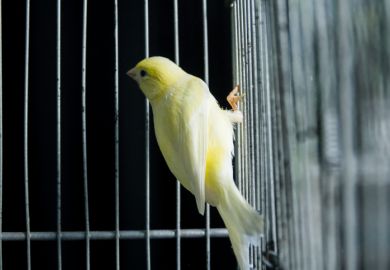Mary Jacobus’ nuanced, layered study of poetry in the painting of the American artist Cy Twombly (1928-2011) invites us to consider the nature of writing, as well as the nature of diverse types of writing in Twombly’s quirky, original visual art. As she examines paintings from different periods of his career, she delves into his debts to (among others) Raphael, Goethe, Ovid and Virgil, to pastoral and haiku, and to Rilke. Inspired by Pound, perhaps through Charles Olson, his teacher at Black Mountain College, Twombly read widely, both within and outside the canon, including contemporary writers such as George Seferis, C. P. Cavafy and Octavio Paz. Jacobus, who had access to Twombly’s library, matches him book for book, and takes us on a tour of the literary substructure (or perhaps superstructure) showing us what a complex of learning and thought surrounds the paintings (and writings) she discusses.
According to Jacobus, “Twombly consistently experiments within an aesthetic that simultaneously links and disjoins marking, sign and reference. Books and poetry at times serve as bearers of figurative meaning; elsewhere a name stands in for a poetic corpus (‘Virgil’), or a quotation for a cultural tradition.” She is excellent on the mystery of the mark on the page, the fascination of illegible or semi-legible writing, most evident in Twombly’s series Letter of Resignation, where the scribbles on the paintings are more eloquent than any text could be.
Twombly also included quotations on his paintings – in the early and middle years, especially, ones that he edited himself. Jacobus shows the blacking-out in his books of lines he considered extraneous to the effect he wanted from the quotation. He had a surprisingly good eye, unerringly leaving out lesser lines, so the words that remained glowed intensely. Jacobus includes a number of telling examples. The simplest is a fragment by Archilochus, translated by Guy Davenport, in which Twombly has inked out one weak line – “With holes” – and the poem is better without it. Other edits are more extensive but equally intolerant of flaccidity.
Although Jacobus doesn’t stress the Pound connection, she allows us to see that all the writing in Twombly’s work is, echoing Pound’s Affirmations: As for Imagism, “a vortex or cluster of fixed ideas and endowed with energy”, which suggests an aesthetic of image rather than symbol in both the art and the writing. The image “endowed with energy” is everywhere evident in Twombly’s visual work – in his vivid colours and arrangement of shapes, the writing working with the visual to extend both. One of his most memorable works, his sculpture Thermopylae, a tumulus with four scrawny tulips rising from it, becomes even more powerful when we read the accompanying inscription from Cavafy’s The Horses of Achilles. The huge, sensuous flower paintings in two late series, Blooms and Roses, are overwhelming images, enhanced by the quotations from haiku in the former and from Rilke’s rose poems in the latter.
Jacobus’ careful reading and broad learning, her understanding of Twombly’s art and the poetry he included in it, and her synthetic discussion of literature and art in various periods and genres – her chapter on pastoral is especially breathtaking – all make this a complex, stunningly memorable book.
Elizabeth Greene is professor emeritus of English, Queen’s University, Canada, and author of the poetry collections The Iron Shoes (2007), Moving (2010) and Understories (2014).
Reading Cy Twombly: Poetry in Paint
By Mary Jacobus
Princeton University Press, 320pp, £34.95
ISBN 9780691170725 and 9781400883288 (e-book)
Published 14 September 2016
Register to continue
Why register?
- Registration is free and only takes a moment
- Once registered, you can read 3 articles a month
- Sign up for our newsletter
Subscribe
Or subscribe for unlimited access to:
- Unlimited access to news, views, insights & reviews
- Digital editions
- Digital access to THE’s university and college rankings analysis
Already registered or a current subscriber? Login






